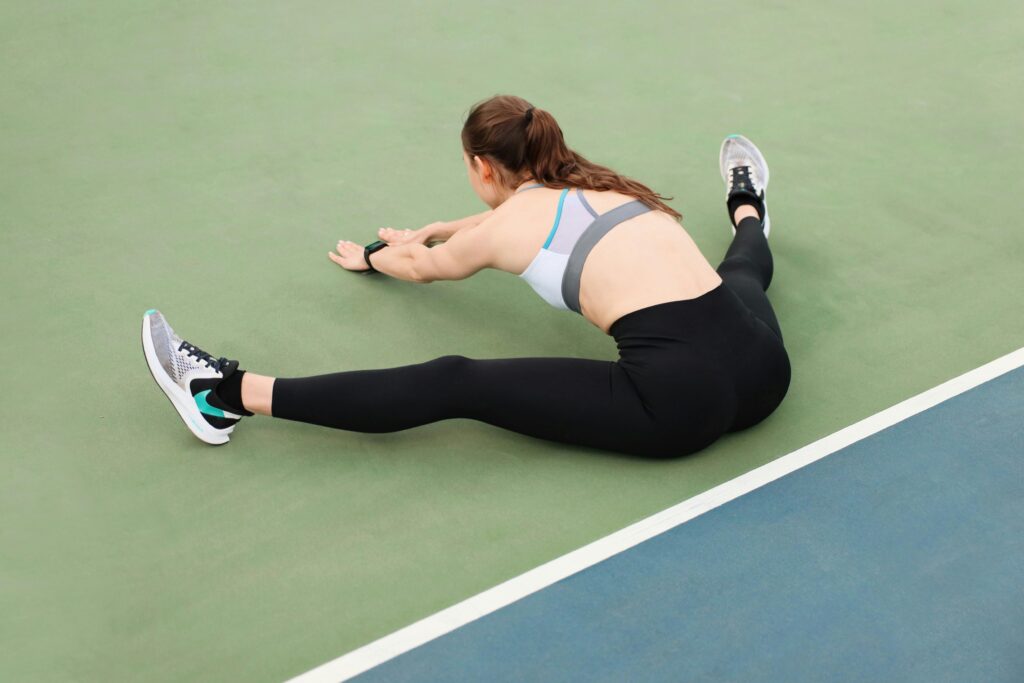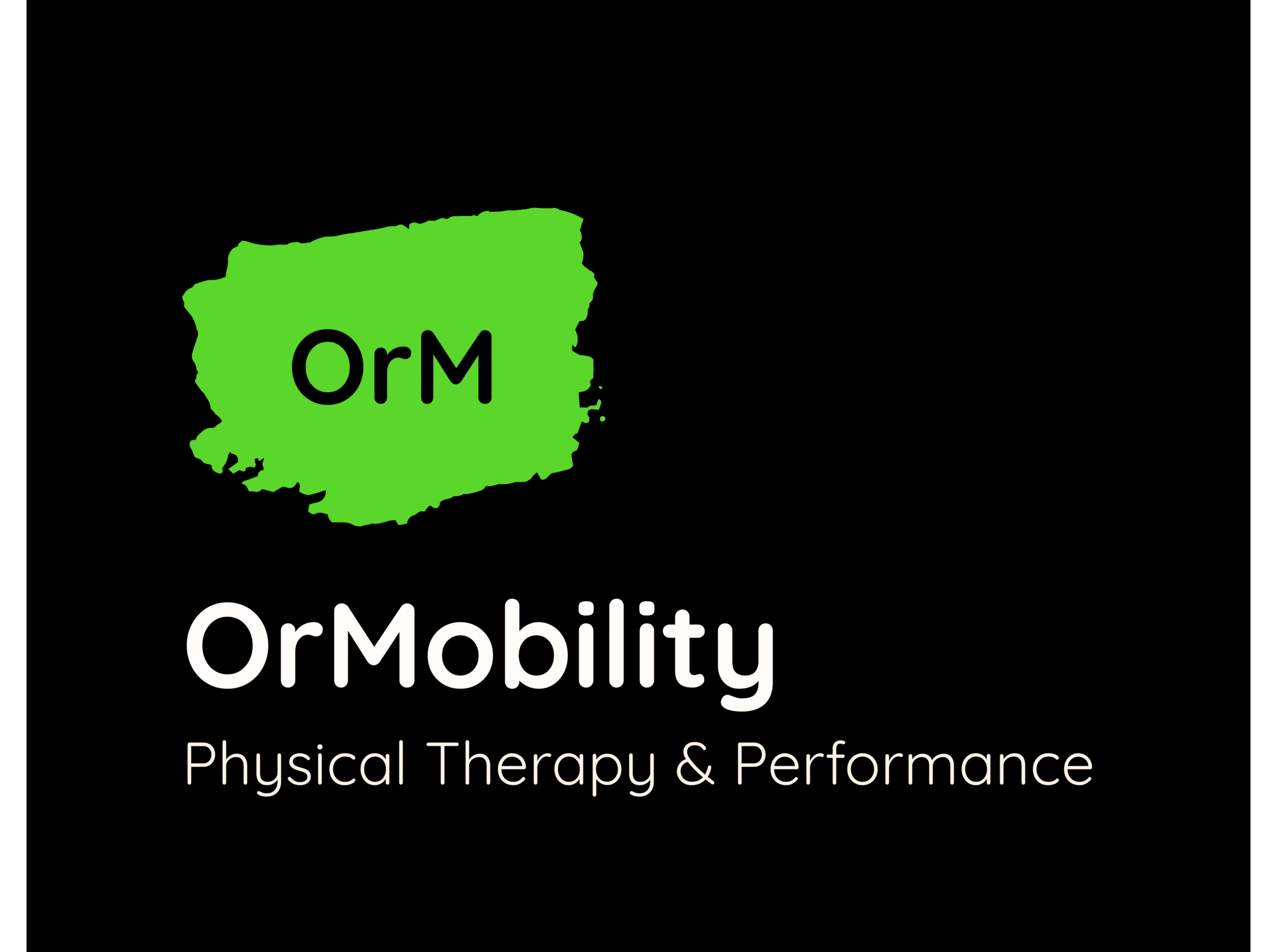Diastasis recti is a condition that weakens your core and affects the alignment of your entire body. It’s often misunderstood as just a “post-baby pooch,” but this abdominal separation can cause real issues like low back pain, urinary incontinence, and reduced contractibility strength in your core. Understanding how to heal diastasis recti is the first step toward regaining control over your core strength and function.
What Is Diastasis Recti and Why It Happens
Diastasis recti occurs when the rectus abdominis muscles (commonly known as your six-pack abs) separate due to a stretching or thinning of the linea alba, the connective tissue that runs down the center of your abdomen. This creates a bulge in the middle of your abdomen, commonly seen during exercises like crunches or when bearing down. While the condition is most associated with pregnancy and delivery, it can also result from chronic strain, improper lifting, or long-term core weakness.
Defining abdominal separation and linea alba dysfunction
Abdominal separation is not just a cosmetic issue. It involves a loss of tension and poor abdominal contraction, leading to protrusion or doming when attempting movement. If left untreated, the tissue may develop into a deep invagination or abdominal tissue bulge, further compromising core integrity and leading to musculoskeletal conditions like low back pain or even hernia.
Common causes—postpartum stretching, age, repeated strain or pregnancy
Although pregnancy is the most common trigger, diastasis recti can affect anyone who has placed prolonged strain on the abdominal wall. Repetitive heavy lifting, obesity, or poor posture can weaken the abdominal wall and compromise core engagement. Over time, this results in weakened tissues that can no longer support the internal organs effectively.
Diastasis recti abdominis (DRA) frequently affects women after childbirth, yet the effectiveness of various nonsurgical methods for reducing or preventing the condition remains uncertain. Ongoing research continues to explore which physical therapy strategies yield the best outcomes for postpartum recovery.
Symptom assessment & self-test methods (finger gap, ultrasound, palpation)
Recognizing diastasis recti-related symptoms early can make a major difference in your healing timeline. Common symptoms include a bulge, numbness, abdominal pain, or doming of the abdominal muscles during movement. You can self-test by lying on your back, lifting your head, and measuring the fingers-width of space between your abdominal muscles. A qualified therapist can use palpation or even ultrasound imaging to measure gap width and gap length, helping to accurately diagnose diastasis recti.

How Long Does It Take to Heal Diastasis Recti?
Healing times vary from person to person, but there are general benchmarks to guide expectations. Understanding how long does it take to heal diastasis recti is essential for staying motivated and setting realistic goals. With proper support and consistent effort, most individuals experience meaningful recovery within a few months.
Typical recovery timeline: 6 weeks to 6 months, with gradual changes starting early
If you’re actively working with a therapist, expect gradual improvements starting around the 6-week mark. A full healing timeline may span 6 to 12 months, especially for those with moderate abdominal separation. However, early signs such as improved abdominal muscle contraction and reduced core weakness often appear within the first few weeks of therapy.
Factors influencing healing speed: gap size, consistency, connective tissue quality, posture habits
Your healing process depends on many factors, including the initial gap width, exercise level, daily posture, and contractibility strength of your core. Those with better connective tissue quality and consistency in their core exercise programs typically heal faster. Nutritional habits also play a role in how your body repairs and regenerates tissue, adequate protein, collagen support, and hydration can enhance your recovery. Learn how to support your rehab process with our Nutrition Goals recommendations for core and pelvic health.
When healing may take longer—up to 18–24 months in severe or connective tissue-dependent cases
In cases involving persistent diastasis, particularly with significant thinning of the linea alba or weakened pelvic floor, recovery may stretch to 18–24 months. People with chronic conditions, high stress loads, or history of abdominal surgeries may also experience delayed healing. But even in these cases, understanding how to heal diastasis recti with proper physical therapy can dramatically reduce long-term symptoms and improve quality of life.
When conservative approaches like physical therapy and guided exercise fail to resolve symptoms, surgical correction may become a viable option, especially in cases involving severe tissue thinning or functional impairment.
Evidence‑Based Physical Therapy Methods
If you’re serious about healing, random workouts aren’t enough. A professional diastasis recti physical therapy program targets the root issues, not just the symptoms. By focusing on posture, breathwork, and safe exercise progression, PT helps retrain your core from the inside out.
Deep core & pelvic‑floor activation: targeting transverse abdominis and pelvic floor muscles
Effective healing starts with reconnecting to your transverse abdominal muscles, which act like a corset around your midsection. These muscles, along with the pelvic floor, need to be trained together using gentle abdominal contraction and breath-based activation. For those also experiencing urinary incontinence or pelvic floor dysfunction, a referral to pelvic floor physical therapy is essential.
Progressive, gentle exercise prescription: diaphragmatic breathing, pelvic tilts, heel slides, glute bridges, planks
Safe exercises include diaphragmatic breathing, pelvic tilts, glute bridges, heel slides, and eventually planks but only when done under expert supervision to avoid textbook doming or worsening the gap. Advanced clients may be guided toward bodyweight bicycles, always prioritizing control over intensity.
Taping, bracing & manual therapy as supportive physical‑therapy modalities
Your therapist may recommend bracing or kinesiotaping to help with posture and tissue approximation. Manual therapy may be used to release tightened tissues or guide abdominal muscle activation. These are supplemental tools that support but don’t replace a guided exercise program.
A Phased Healing Protocol with PT Guidance
Physical therapy offers a structured, science-backed path to recovery. Each phase builds on the last, ensuring your body regains full core engagement without risking reinjury. Let’s look at how to heal diastasis recti in progressive phases.
Phase 1 (Weeks 0–6): activation, posture education, breathing, reclined or seated core work
This phase focuses on restoring abdominal contraction and reconnecting your breath to your core muscles. You’ll learn neutral posture, breathing strategies, and light reclined core work using resistance or guided activation. Avoid any exercises that cause doming, bulging, or a visible abdominal separation during this period.
Phase 2 (Weeks 6–12): standing progressions, gentle functional movement, pelvic‑floor integration
Here, you’ll advance to standing exercises and real-life movements such as squats, light lifts, and overhead reach. Integration with the pelvic floor physical therapist may be recommended if incontinence or pain during intercourse persists. Continued breathwork ensures you avoid bearing down or holding your breath under pressure.
Phase 3 (Up to 6‑12+ months): higher load, stability return, exercise advancement, posture & movement re‑education
This final stage is where long-term healing happens. Your therapist will help you rebuild full-body strength using controlled planks, functional lifts, and posture retraining. Addressing daily habits and movement patterns will prevent relapse and promote lifetime core health.

Why Physical Therapy Is the Best Approach
You don’t have to navigate this alone. A personalized plan, crafted by a licensed physical therapist, is the best approach to healing abdominal separation. Unlike random videos or generic apps, PT tailors the treatment to your needs and body mechanics.
Customized treatment plans vs generic workouts or online guides
No two gaps are the same, just as no two bodies are the same. A professional PT will assess gap length, width of the gap, and tissue quality to build a program suited for you. Start with a consult for Diastasis Recti treatment in Roseburg to receive individualized care.
Educating on daily movement, posture, lifting, and breathing techniques
Physical therapy also teaches real-world skills like lifting, squatting, and even childcare strategies post-pregnancy. Understanding proper breathing techniques and posture makes every movement a healing opportunity, not a setback.
Hands‑on manual therapy, progress tracking, and long‑term recurrence prevention
From progress photos to measurable abdominal muscle contraction, your therapist will track your recovery and make changes as needed. This hands-on care ensures lasting results and minimizes the chance of a future persistent diastasis or pelvic floor dysfunction.
Ready to Heal Your Core? Seek Specialized Physical Therapy Near You
If you’re searching for diastasis recti physical therapy near me, you’re already on the right path. A professional evaluation is the key first step. Schedule a visit or Request Appointment today with a therapist who specializes in abdominal health and core strength recovery.
Conclusion
Healing your core takes more than crunches, it takes a plan. Learning how to heal diastasis recti through physical therapy can restore your confidence, function, and comfort. With the right support, you can eliminate diastasis recti-related symptoms, rebuild strength, and protect your body for the long term.
FAQs
Can diastasis recti heal on its own—and when should you seek PT?
Mild separation may close over time, but many cases need guided diastasis recti exercise regimens and professional evaluation. If you notice a bulge, doming, or feel abdominal pain, consult a therapist. When in doubt, start your recovery with a certified pelvic floor physical therapist.
Are crunches dangerous or helpful? Exercises to avoid (doming, coning, sit‑ups)
Most traditional crunches and stomach crunches increase pressure on the abdominal wall, making things worse. Avoid any movement that causes coning, doming, or a visible abdominal muscle separation. Focus instead on controlled, guided exercises taught in core physical therapy programs.
Can men develop this condition—and should they seek PT?
Yes. Men can develop diastasis recti from chronic lifting, abdominal strain, or obesity. Whether male or female, everyone deserves support in understanding how to heal diastasis recti safely with a structured plan and clinical guidance.
Diastasis recti is a condition that weakens your core and affects the alignment of your entire body. It’s often misunderstood as just a “post-baby pooch,” but this abdominal separation can cause real issues like low back pain, urinary incontinence, and reduced contractibility strength in your core. Understanding how to heal diastasis recti is the first step toward regaining control over your core strength and function.
What Is Diastasis Recti and Why It Happens
Diastasis recti occurs when the rectus abdominis muscles (commonly known as your six-pack abs) separate due to a stretching or thinning of the linea alba, the connective tissue that runs down the center of your abdomen. This creates a bulge in the middle of your abdomen, commonly seen during exercises like crunches or when bearing down. While the condition is most associated with pregnancy and delivery, it can also result from chronic strain, improper lifting, or long-term core weakness.
Defining abdominal separation and linea alba dysfunction
Abdominal separation is not just a cosmetic issue. It involves a loss of tension and poor abdominal contraction, leading to protrusion or doming when attempting movement. If left untreated, the tissue may develop into a deep invagination or abdominal tissue bulge, further compromising core integrity and leading to musculoskeletal conditions like low back pain or even hernia.
Common causes—postpartum stretching, age, repeated strain or pregnancy
Although pregnancy is the most common trigger, diastasis recti can affect anyone who has placed prolonged strain on the abdominal wall. Repetitive heavy lifting, obesity, or poor posture can weaken the abdominal wall and compromise core engagement. Over time, this results in weakened tissues that can no longer support the internal organs effectively.
Diastasis recti abdominis (DRA) frequently affects women after childbirth, yet the effectiveness of various nonsurgical methods for reducing or preventing the condition remains uncertain. Ongoing research continues to explore which physical therapy strategies yield the best outcomes for postpartum recovery.
Symptom assessment & self-test methods (finger gap, ultrasound, palpation)
Recognizing diastasis recti-related symptoms early can make a major difference in your healing timeline. Common symptoms include a bulge, numbness, abdominal pain, or doming of the abdominal muscles during movement. You can self-test by lying on your back, lifting your head, and measuring the fingers-width of space between your abdominal muscles. A qualified therapist can use palpation or even ultrasound imaging to measure gap width and gap length, helping to accurately diagnose diastasis recti.

How Long Does It Take to Heal Diastasis Recti?
Healing times vary from person to person, but there are general benchmarks to guide expectations. Understanding how long does it take to heal diastasis recti is essential for staying motivated and setting realistic goals. With proper support and consistent effort, most individuals experience meaningful recovery within a few months.
Typical recovery timeline: 6 weeks to 6 months, with gradual changes starting early
If you’re actively working with a therapist, expect gradual improvements starting around the 6-week mark. A full healing timeline may span 6 to 12 months, especially for those with moderate abdominal separation. However, early signs such as improved abdominal muscle contraction and reduced core weakness often appear within the first few weeks of therapy.
Factors influencing healing speed: gap size, consistency, connective tissue quality, posture habits
Your healing process depends on many factors, including the initial gap width, exercise level, daily posture, and contractibility strength of your core. Those with better connective tissue quality and consistency in their core exercise programs typically heal faster. Nutritional habits also play a role in how your body repairs and regenerates tissue, adequate protein, collagen support, and hydration can enhance your recovery. Learn how to support your rehab process with our Nutrition Goals recommendations for core and pelvic health.
When healing may take longer—up to 18–24 months in severe or connective tissue-dependent cases
In cases involving persistent diastasis, particularly with significant thinning of the linea alba or weakened pelvic floor, recovery may stretch to 18–24 months. People with chronic conditions, high stress loads, or history of abdominal surgeries may also experience delayed healing. But even in these cases, understanding how to heal diastasis recti with proper physical therapy can dramatically reduce long-term symptoms and improve quality of life.
When conservative approaches like physical therapy and guided exercise fail to resolve symptoms, surgical correction may become a viable option, especially in cases involving severe tissue thinning or functional impairment.
Evidence‑Based Physical Therapy Methods
If you’re serious about healing, random workouts aren’t enough. A professional diastasis recti physical therapy program targets the root issues, not just the symptoms. By focusing on posture, breathwork, and safe exercise progression, PT helps retrain your core from the inside out.
Deep core & pelvic‑floor activation: targeting transverse abdominis and pelvic floor muscles
Effective healing starts with reconnecting to your transverse abdominal muscles, which act like a corset around your midsection. These muscles, along with the pelvic floor, need to be trained together using gentle abdominal contraction and breath-based activation. For those also experiencing urinary incontinence or pelvic floor dysfunction, a referral to pelvic floor physical therapy is essential.
Progressive, gentle exercise prescription: diaphragmatic breathing, pelvic tilts, heel slides, glute bridges, planks
Safe exercises include diaphragmatic breathing, pelvic tilts, glute bridges, heel slides, and eventually planks but only when done under expert supervision to avoid textbook doming or worsening the gap. Advanced clients may be guided toward bodyweight bicycles, always prioritizing control over intensity.
Taping, bracing & manual therapy as supportive physical‑therapy modalities
Your therapist may recommend bracing or kinesiotaping to help with posture and tissue approximation. Manual therapy may be used to release tightened tissues or guide abdominal muscle activation. These are supplemental tools that support but don’t replace a guided exercise program.
A Phased Healing Protocol with PT Guidance
Physical therapy offers a structured, science-backed path to recovery. Each phase builds on the last, ensuring your body regains full core engagement without risking reinjury. Let’s look at how to heal diastasis recti in progressive phases.
Phase 1 (Weeks 0–6): activation, posture education, breathing, reclined or seated core work
This phase focuses on restoring abdominal contraction and reconnecting your breath to your core muscles. You’ll learn neutral posture, breathing strategies, and light reclined core work using resistance or guided activation. Avoid any exercises that cause doming, bulging, or a visible abdominal separation during this period.
Phase 2 (Weeks 6–12): standing progressions, gentle functional movement, pelvic‑floor integration
Here, you’ll advance to standing exercises and real-life movements such as squats, light lifts, and overhead reach. Integration with the pelvic floor physical therapist may be recommended if incontinence or pain during intercourse persists. Continued breathwork ensures you avoid bearing down or holding your breath under pressure.
Phase 3 (Up to 6‑12+ months): higher load, stability return, exercise advancement, posture & movement re‑education
This final stage is where long-term healing happens. Your therapist will help you rebuild full-body strength using controlled planks, functional lifts, and posture retraining. Addressing daily habits and movement patterns will prevent relapse and promote lifetime core health.

Why Physical Therapy Is the Best Approach
You don’t have to navigate this alone. A personalized plan, crafted by a licensed physical therapist, is the best approach to healing abdominal separation. Unlike random videos or generic apps, PT tailors the treatment to your needs and body mechanics.
Customized treatment plans vs generic workouts or online guides
No two gaps are the same, just as no two bodies are the same. A professional PT will assess gap length, width of the gap, and tissue quality to build a program suited for you. Start with a consult for Diastasis Recti treatment in Roseburg to receive individualized care.
Educating on daily movement, posture, lifting, and breathing techniques
Physical therapy also teaches real-world skills like lifting, squatting, and even childcare strategies post-pregnancy. Understanding proper breathing techniques and posture makes every movement a healing opportunity, not a setback.
Hands‑on manual therapy, progress tracking, and long‑term recurrence prevention
From progress photos to measurable abdominal muscle contraction, your therapist will track your recovery and make changes as needed. This hands-on care ensures lasting results and minimizes the chance of a future persistent diastasis or pelvic floor dysfunction.
Ready to Heal Your Core? Seek Specialized Physical Therapy Near You
If you’re searching for diastasis recti physical therapy near me, you’re already on the right path. A professional evaluation is the key first step. Schedule a visit or Request Appointment today with a therapist who specializes in abdominal health and core strength recovery.
Conclusion
Healing your core takes more than crunches, it takes a plan. Learning how to heal diastasis recti through physical therapy can restore your confidence, function, and comfort. With the right support, you can eliminate diastasis recti-related symptoms, rebuild strength, and protect your body for the long term.
FAQs
Can diastasis recti heal on its own—and when should you seek PT?
Mild separation may close over time, but many cases need guided diastasis recti exercise regimens and professional evaluation. If you notice a bulge, doming, or feel abdominal pain, consult a therapist. When in doubt, start your recovery with a certified pelvic floor physical therapist.
Are crunches dangerous or helpful? Exercises to avoid (doming, coning, sit‑ups)
Most traditional crunches and stomach crunches increase pressure on the abdominal wall, making things worse. Avoid any movement that causes coning, doming, or a visible abdominal muscle separation. Focus instead on controlled, guided exercises taught in core physical therapy programs.
Can men develop this condition—and should they seek PT?
Yes. Men can develop diastasis recti from chronic lifting, abdominal strain, or obesity. Whether male or female, everyone deserves support in understanding how to heal diastasis recti safely with a structured plan and clinical guidance.


